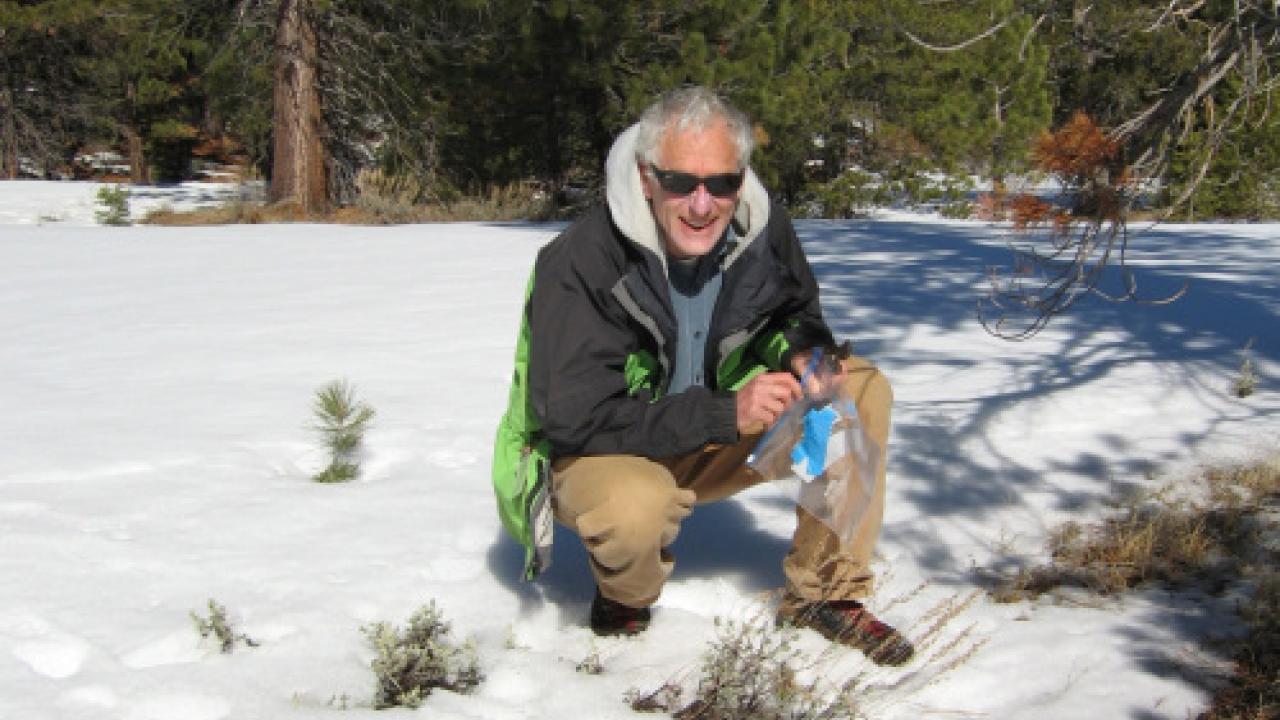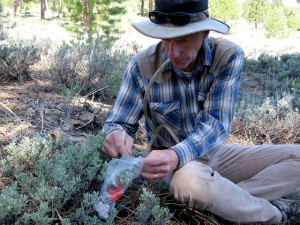
The secret language of plants
Communication among plants in response to injury could have positive benefits to crop production.
The research of Professor Richard Karban, an ecologist and entomologist at UC Davis, was highlighted in recent articles in Quanta Magazine and the New Yorker.
Kat McGowan, in Quanta Magazine, profiles Karban’s work in the Sierra Nevada on how plants communicate with one another. The article notes that the evidence for plant communication is only a few decades old, but in that short time it has leapfrogged from electrifying discovery to decisive debunking to resurrection.
It’s now well established that when bugs chew leaves, plants respond by releasing volatile organic compounds into the air. Recent studies of plant communication confirm that other plants detect these airborne signals and ramp up their production of chemical weapons or other defense mechanisms in response. The debate is no longer whether plants can sense one another’s biochemical messages — they can — but about why and how they do it.
The answer could have big implications: Farmers might be able to use the information to improve crop resistance to pests and herbivores. More broadly, the possibility that plants share information raises intriguing questions about why organisms that compete with one another might also see fit to network their knowledge.
Michael Pollan’s article on “The Intelligent Plant,” in the New Yorker, profiles Rick Karban’s research on how plants exchange chemical signals outdoors, in a natural setting. At the University of California’s Sagehen Creek Field Station, near Truckee, Karban has been studying sagebrush plants for more than a decade.

- Richard Karban, an ecologist at the University of California, Davis, studies how sagebrush communicate.
Karban has shown that when sagebrush leaves are clipped in the spring — simulating an insect attack that triggers the release of volatile chemicals — both the clipped plant and its unclipped neighbors suffer significantly less insect damage over the season. He believes that the plant is alerting all its leaves to the presence of a pest, but its neighbors pick up the signal, too, and gird themselves against attack. “We think the sagebrush are basically eavesdropping on one another,” Karban said. He found that the more closely related the plants the more likely they are to respond to the chemical signal, suggesting that plants may display a form of kin recognition. Helping out your relatives is a good way to improve the odds that your genes will survive.
Additional information:
- Quanta Magazine article
- The New Yorker article
- Rick Karban website
Media contacts:
- Professor Richard Karban, Dept. of Entomology and Nematology, UC Davis, 530-752-2800, rkarban@ucdavis.edu
- Ann Filmer, College of Agricultural and Environmental Sciences, UC Davis, 530-754-6788, afilmer@ucdavis.edu